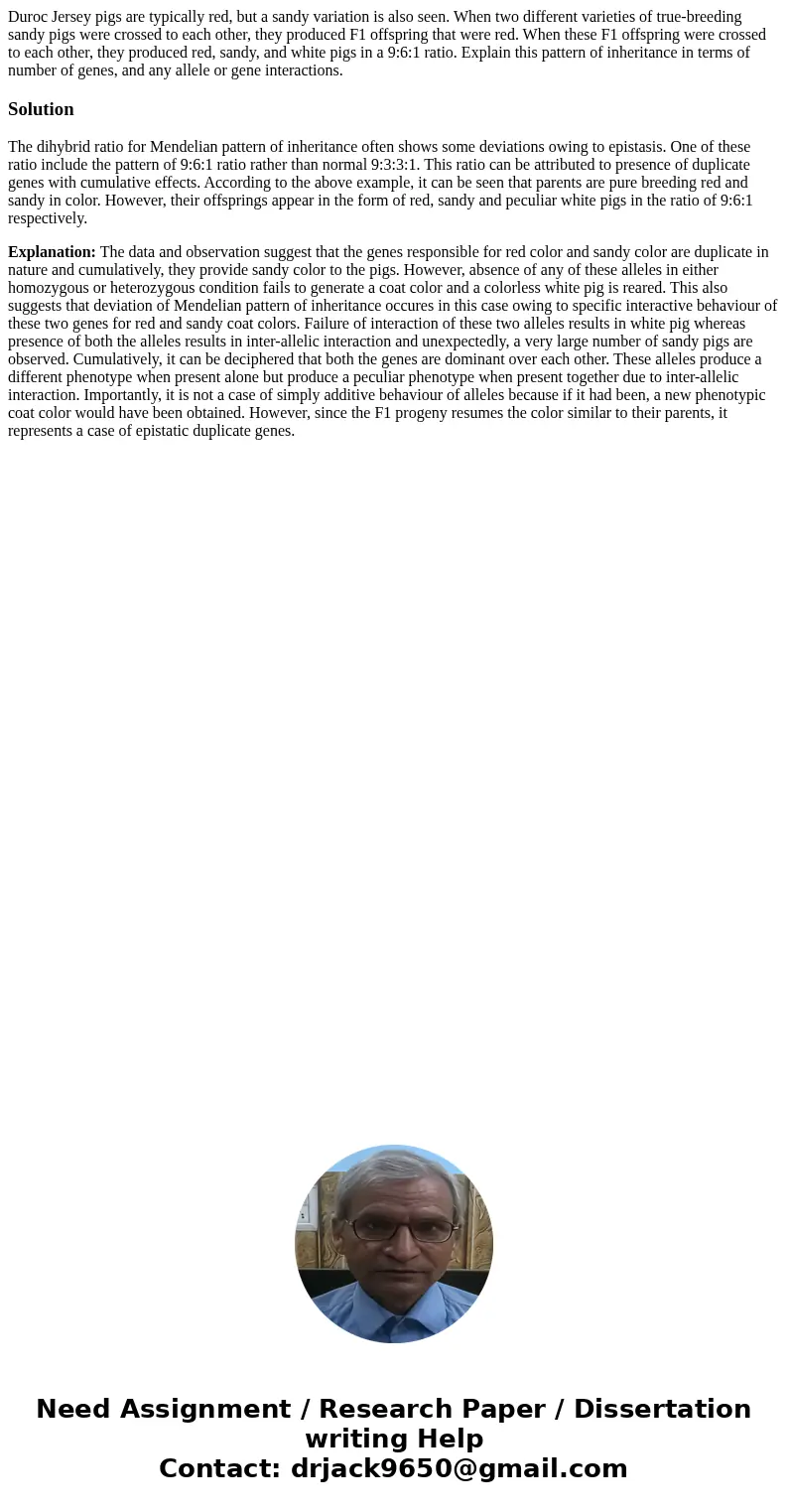Duroc Jersey pigs are typically red but a sandy variation is
Duroc Jersey pigs are typically red, but a sandy variation is also seen. When two different varieties of true-breeding sandy pigs were crossed to each other, they produced F1 offspring that were red. When these F1 offspring were crossed to each other, they produced red, sandy, and white pigs in a 9:6:1 ratio. Explain this pattern of inheritance in terms of number of genes, and any allele or gene interactions.
Solution
The dihybrid ratio for Mendelian pattern of inheritance often shows some deviations owing to epistasis. One of these ratio include the pattern of 9:6:1 ratio rather than normal 9:3:3:1. This ratio can be attributed to presence of duplicate genes with cumulative effects. According to the above example, it can be seen that parents are pure breeding red and sandy in color. However, their offsprings appear in the form of red, sandy and peculiar white pigs in the ratio of 9:6:1 respectively.
Explanation: The data and observation suggest that the genes responsible for red color and sandy color are duplicate in nature and cumulatively, they provide sandy color to the pigs. However, absence of any of these alleles in either homozygous or heterozygous condition fails to generate a coat color and a colorless white pig is reared. This also suggests that deviation of Mendelian pattern of inheritance occures in this case owing to specific interactive behaviour of these two genes for red and sandy coat colors. Failure of interaction of these two alleles results in white pig whereas presence of both the alleles results in inter-allelic interaction and unexpectedly, a very large number of sandy pigs are observed. Cumulatively, it can be deciphered that both the genes are dominant over each other. These alleles produce a different phenotype when present alone but produce a peculiar phenotype when present together due to inter-allelic interaction. Importantly, it is not a case of simply additive behaviour of alleles because if it had been, a new phenotypic coat color would have been obtained. However, since the F1 progeny resumes the color similar to their parents, it represents a case of epistatic duplicate genes.

 Homework Sourse
Homework Sourse